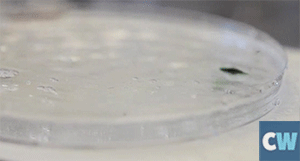Environmental science – Page 59
-
 Feature
FeatureGoing for gold
Nina Notman looks at attempts to reduce the environmental impacts of small-scale gold mining
-
 Research
ResearchCutting edge chemistry in 2015
We take a look back at the year’s most interesting chemical science stories
-
 News
NewsParis climate summit yields push for clean energy
Several major initiatives were launched by government and industry leaders on the first day of the talks
-
 Research
ResearchSaving water increases health risks in green buildings
Study shows that sustainable plumbing systems may lower drinking water quality and help bacteria grow
-
 Research
ResearchChlorinated compounds form in tea and coffee
Treated water reacts with organics to form disinfection byproducts
-
 News
NewsNasa develop ‘chemical laptop’ for on-the-go analysis
Portable laboratory can search for molecules associated with life
-
 News
NewsBrazilian mine disaster releases dangerous metals
Irreversible negative human health and environmental effects could result from Brazilian mine’s dam collapse
-
Research
Early lead exposure linked to sleep problems
Researchers find lead exposure in early childhood is associated with sleep difficulties later on
-
 Research
ResearchJurassic pigment structure elucidation tickles chemists pink
Unusual boron-based molecule found in ancient algae fossil throws light on natural product evolution
-

-
 Research
ResearchRosetta detects oxygen on comet 67P
Molecular oxygen has been detected in the coma of a comet for the first time
-
News
WHO urged to revisit drinking water guidelines
World Health Organisation’s guidelines for nine toxic elements are too lax and need to be re-evaluated, analysis suggests
-

-
 Opinion
OpinionThe carbon capture challenge
Economics holds the key to solving climate change, says Mark Peplow
-
 Podcast
PodcastChemistry World podcast – October 2015
This month, we chart a course through chemical space and discover the potential problems of cleaning up Sellafield
-
 Research
ResearchMicroporous copper silicate sucks up carbon dioxide
Humid flue gases from fossil fuel power stations are no problem for this new material
-

-
 Business
BusinessDuPont found liable for cancer case
US court orders firm to pay $1.6m in damages for disease linked to contaminated water supply
-
 Research
ResearchStencilling self-propulsion engines
New method prints tiny artificial fish that could find use in water remediation
-
 News
NewsChina launches nationwide emissions trading scheme
World’s two largest polluters, the US and China, agree further action to tackle climate change